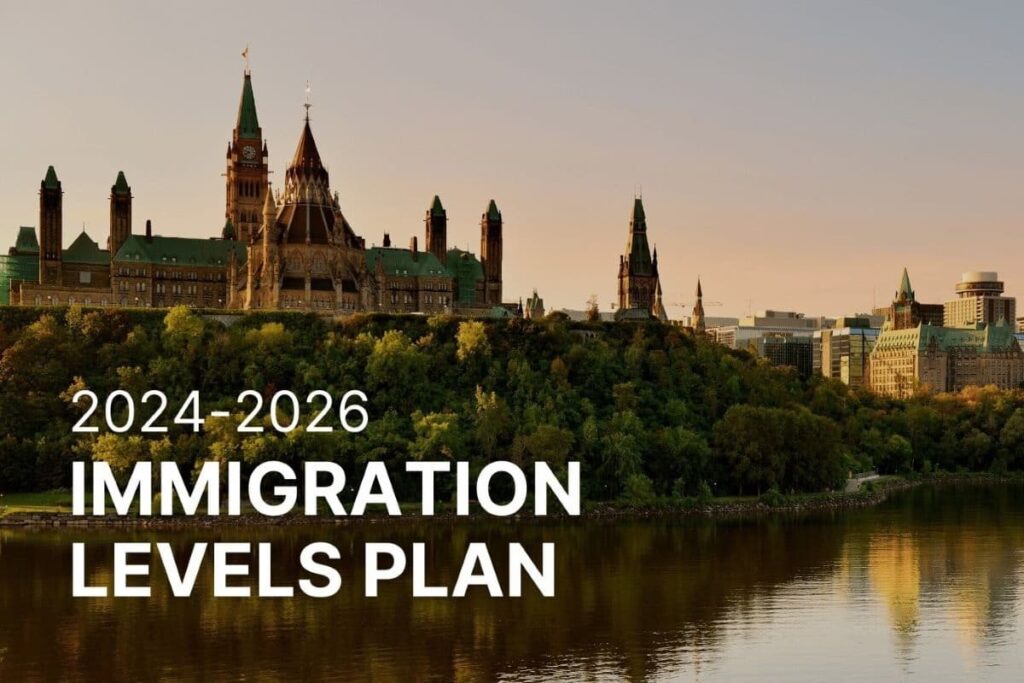
Canada will release its Immigration Levels Plan 2024-2026 later today.
Note: This is a developing story. CIC Updates will update it once the Immigration Levels is released.
Under the Immigration and Refugees Protection Act (IRPA), which is Canada’s main immigration law, the federal government must release its annual immigration plan by November 1 in non-election years.
The Immigration Levels Plan acts as the guideline for the number of new permanent residents who will be admitted into Canada over the next three years under each of the three immigration classes: economic, family, and humanitarian.
The plan advances the mission of Immigration, Refugees and Citizenship Canada (IRCC) to strengthen Canada’s economy, reunite families and make Canada a safe place for those fleeing oppression or other humanitarian crises.
In 2022, Canada broke the record for new immigrants at 437,000 admissions. The target for permanent resident admissions in 2023 is 465,000.
Canada pursuing new strategy to improve immigration system
The Immigration Levels Plan 2024-2026 comes one day after Canada unveiled a new strategy to improve its immigration system. On October 31, Immigration Minister Marc Miller acknowledged shortcomings in the country’s immigration system as he outlined the pillars of a new approach to modernize the system.
The new strategy, entitled An Immigration System for Canada’s Future, has three major goals:
- Create a more welcoming experience for newcomers
- Align immigration with labour market needs
- Develop a comprehensive and coordinated growth plan
IRCC is seeking to deliver a more pleasant and user-friendly experience to its clients.
In addition, IRCC would like to better align Canada’s immigration policies with its skills and labour strategy.
Third, IRCC would like to develop an integrated plan among all three of Canada’s levels of government to ensure the country can offer adequate housing, health care, and infrastructure to its growing newcomer population.
Canada began to increase immigration levels in the late 1980s
Canada’s immigration strategy began to shift toward its current form in the late 1980s. Before this, the government did not place as much emphasis on planning for future immigration and generally set immigration targets based on the economy of the day.
Canada welcomed fewer than 90,000 immigrants in 1984. As the 1990s approached, the federal government, run by the Conservative party at that time, realized there would soon be a shortage of labour and raised immigration targets to 250,000 new permanent residents over eight years.
The Liberal government was then elected in 1993 and continued to increase immigration targets. It also began to put more focus on admitting economic class immigrants and reducing Canada’s family and humanitarian class shares to help aid the economy in a recession.
Some 260,000 immigrants were then admitted annually until the current Liberal government was elected in 2015. Under the current federal government, led by Prime Minister Justin Trudeau, targets were raised to 300,000 and then to 340,000 shortly before the beginning of the COVID-19 pandemic in 2020.
In 2021, despite pandemic restrictions, Canada broke its record for permanent resident admissions by landing 405,000 new immigrants.
Canada is currently coping with an affordability crisis and housing shortage that has led to several polls indicating less enthusiasm among Canadians for immigration than in previous years.
However, IRCC continues to maintain high immigration targets because of a shortage of skilled labour in the face of a low birth rate and the impending retirement of millions of Canadian workers as they reach 65. As it stands, Statistics Canada’s most recent population estimate shows that newcomers are responsible for 98% of Canada’s population growth.
The most recent job vacancy data shows that, as of July 2023, there were 701,300 vacant jobs in Canada. While this is a decrease of 273,700 open positions in a year-over-year period, it is still significant enough for IRCC to make some changes to prominent immigration programs and systems, such as Express Entry.
Earlier this year, to further target economic immigrants who are best suited to help Canada close the labour force gap, IRCC introduced category-based selection rounds of invitations for Express Entry candidates who have work experience in an in-demand sector, or the ability to promote the French language outside of Quebec.